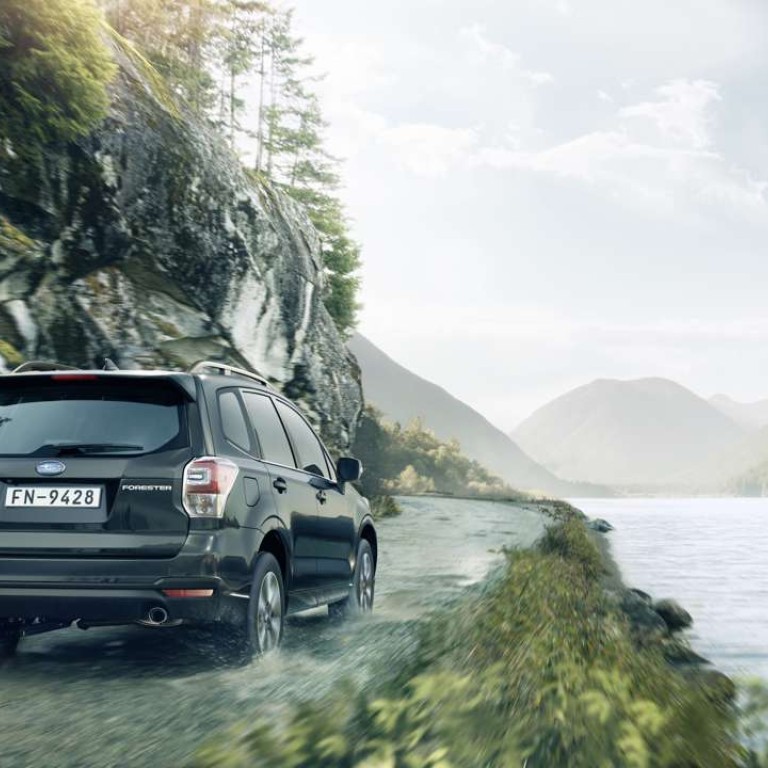
The Subaru Forester ticks all the boxes for a capable, compact SUV
A compact SUV doesn’t come much pokier than the Subaru Forester 2.0XT. The mid-lifecycle refresh of the fourth-generation model is more powerful than any of its Japanese and South Korean rivals, with a 2-litre, 4-cylinder boxer engine that produces 241 horsepower and 350 Newton metres of torque.
Compare that to the Toyota RAV-4, with a 2-litre engine rated at 150 horsepower; the Maxda CX-5, whose 2.5-litre engine outputs 192 horsepower; and the latest Kia Sportage EX Premium, equipped with a 184-horsepower, 2.4-litre engine. The Forester also beats the much more expensive Lexus NX200t, which is powered by a 2-litre turbocharged 238-horsepower engine.
Subaru isn’t shy about doing things its own way. That includes the symmetrical all-wheel-drive system with trademark boxer engine in its SUVs. Like all of Subaru’s turbocharged boxer engines, it is characterised by a low-pitched rumble when pushed.
The Japanese company likes to boast that the system is more balanced, enhances traction and provides a high level of control, ensuring safety for the driver and passengers. It also makes the vehicle more fun to drive, the carmaker says.
However, motorists have different ideas about driving fun. Driving a new Forester down a multi-lane highway in the New Territories is not the kind of driving fun I have in mind. The traffic is heavy, and the fact many road users ignore the “keep left” signs and dally in the fast lane means the Forester is frequently weaving between lanes. It does so effortlessly, however, with a minimum of steering angle input – although the steering is not particularly quick.
Although no one would buy a Forester for its acceleration, its ability to hit 100 km/h in 7.5 seconds is impressive for a compact SUV. The vehicle has been widely praised for its engaging driving, thanks largely to that aforementioned four-wheel-drive system, but I beg to differ. It feels less smooth in city driving compared to some SUVs with front-wheel drive, while the combination of relatively generous ground clearance (220mm) and a set of all-season Bridgestone Dueler H/L tyres means it cannot tackle a series of tight and fast sweeping corners as well as, for example, a Subaru WRX.
Driving a new Forester down a multi-lane highway in the New Territories is not the kind of driving fun I have in mind
The use of “Intelligent” mode in the SUV’s Intelligent Drive system keeps the engine rev low and makes a the ride comfortable, especially when cruising. The company says this mode returns up to 10 per cent improved fuel economy.
Some drivers may find Intelligent mode too docile, as the throttle response is somewhat sluggish. For added engine response, you can choose Sport or Sport Sharp, controlled via a button on the steering wheel.
On a stretch of twisty road, with frequent throttle changes, using Sport mode boosts the responsiveness. Now, the Lineartronic continuously variable transmission coordinates with the boxer engine in such a way as to maintain a higher engine rev.
Unexpectedly, the Sport Sharp is a noisier and even more aggressive mode, with the engine rev perhaps unnecessarily high. I’m not sure there is any added performance.
The interior of the Forester retains the layout of the pre-facelift model. The only major change is the use of “piano black” trims. The spaciousness of the cabin is reinforced by a big panoramic roof.

There is a smaller information display atop the dashboard for a raft of vehicle information; temperature setting, turbo boost pressure, fuel consumption figures, steering angle and so on, dependent on the SI Drive mode.
The equipment that comes with the Forester is adequate and practical, without too much focus on comfort and convenience. The upholstery is leather and the driver’s seat electrically controlled, but the passenger seat must be adjusted manually.
On the exterior, the Forester has been given new LED front and rear lamps. There is a steering responsive headlight system that can be switched off at the touch of a button next to the steering column. Then there is a slightly revised front grille and bumper, and a new set of aluminium wheels.
The luggage-carrying capacity is 422 litres with the rear seats up. It is not a class-leading figure, beaten by the likes of Mazda CX-5 (503 litres), front-wheel drive Volvo XC60 (495 litres) and even the Audi Q3 (460 litres).
Overall, the Forester ticks all the boxes for a capable SUV. The fact that everything is sensibly packaged around the carmaker’s unique symmetrical all-wheel-drive system makes the Forester a real deal among compact SUVs and a most distinctive one.
The Forester costs HK$329,800, including the first registration tax.
